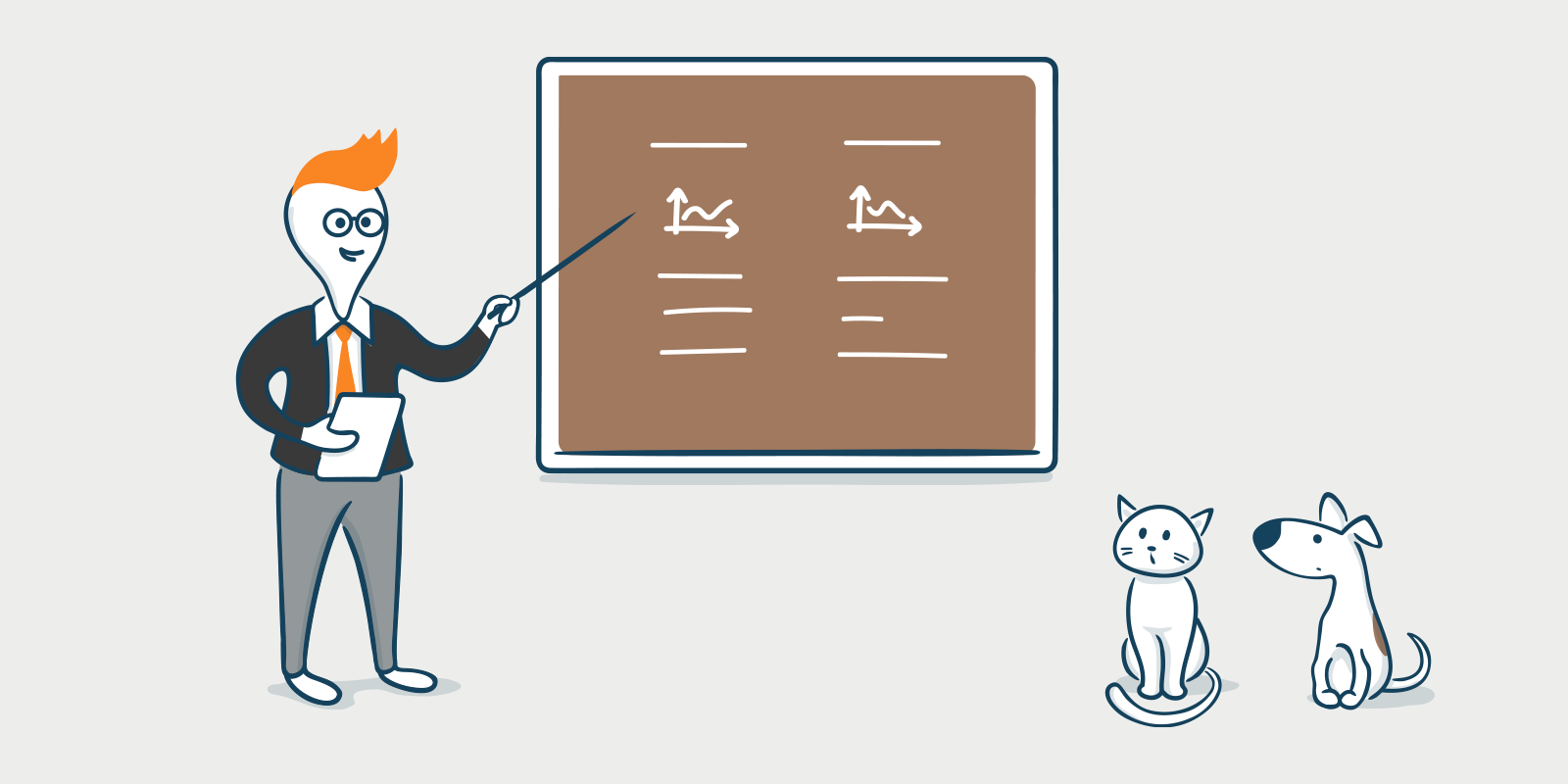
In this guide, we look at whether a buy-to-let property is a worthwhile investment. In terms of saving with a bank, one of the best deals you can get is around 2% in a long-term fixed account with no access to your cash. Meanwhile, by April, the inflation rate will probably hit 6%, which means you are losing money hand over fist. So if you are looking to build up a nest egg, then maybe you should consider investing in property.
What is buy-to-let?
A buy-to-let property is pretty much what it says, and it’s a property you buy with no intention of living in yourself but instead to rent out. When you approach a bank for a mortgage, you need to explain to the lender that the property you wish to buy is a rental investment. This is because different rules, conditions, and rates apply to buy-to-lets.
An overview of investment opportunities
Property
Property has always been an excellent option for the average man of the street who is looking to create a retirement income. But boomers who have ended up with a mortgage-free home worth hundreds of thousands may still be left with a challenging option. Sure, if you want to move out of a large family home and unlock the investment, then great. But if you don’t want to leave a family home full of memories, all you have is a hefty inheritance gift but no retirement income.
Buy-to-let property
However, if you have also invested in buy-to-let property, you potentially have a very healthy retirement income. If you had invested in an average priced property in 2005, your £150,000 property would now be worth on average £250,000. That’s a hefty 67% increase. It’s important to know that most buy-to-let mortgages are interest-only. This means you are making no payment whatsoever to pay off your £150,000 loan; you are merely paying the interest on the loan. At the end of the term, you will still owe £150,000. However, by simply selling your £250,000 property, you can pay back the loan and pocket the profit. But it’s important not to make the mistake of thinking you will own the property after the term unless you chose a repayment mortgage.
Saving
At the same time, previous good options have dried up. Since the 2008 crash, those looking for a risk-free, hassle-free way to save with a bank have had few options with a base rate glued below 1% for well over a decade now. Even though the rate is expected to rise, as we explained, it’s crazy to save when inflation is above the interest rate you can get.
Stocks and shares
Stocks and shares are an option, but if you don’t know what you are doing, you may as well take your money to the bookies and hope for a win. Of course, many people make a fortune this way, gambling on new start-ups and cryptos. But it’s also a highly risky strategy, and you could lose everything.
Gold
Finally, there’s gold. If you had grabbed yourself an ounce of gold 15 years ago for around £300, you could now get around £1300 for it. Gold nearly always makes a good investment in the long run, but there’s not much to do with it but lock it away exceptionally safely. It’s only the Queen that can carry off wearing a crown with five whole pounds or 80 ounces of gold! Wearing large amounts of gold is neither practical nor safe. And if you are keeping gold at home, it needs itemising, insuring, storing safely, and discretion is essential, least you attract a home invasion.
With these main contenders discussed, buy-to-let looks like a very promising opportunity. Aside from the final profit after your buy-to-let is sold, if you have made a careful investment, you can also expect a small side income for the time you are renting the property. A buy-to-let property could save you money in other ways as well. For example, if you plan to pay your child’s rent through their time at university, then it might be a perfect idea for you to spare yourself years of dead rent and buy a property for them to occupy while they are studying.
Why buy-to-let property is a good option in 2022
In 2021, Bank of England base rates finally increased from a stubborn 0.1% to 0.75%. These unprecedentedly low rates, which have been penalising savers, have hugely benefited homeowners and buy-to-let investors. This spells bad news for property investors. But it does mean that NOW is an excellent time to lock in a low fixed-rate mortgage on a suitable property before further inflation-easing hikes occur later.
House prices also rose 7.5% from Jan 2020 to 2021, so it’s also a good opportunity to buy now and hopefully take advantage of a bargain before prices rise further.
What to look out for
If you are looking for a passive income, though, such as saving or investing in gold, becoming a buy-to-let landlord is not it. Being a landlord takes far more work than many people expect. In addition, there are several rules and regulations that you need to adhere to; otherwise, you could end up in legal hot water or even in prison. Some of the things that you MUST do as a landlord include the following:
- Check your tenant has the right to rent
- Install carbon monoxide and smoke alarms
- PAT test all electrical items
- Obtain an annual gas certificate from a qualified professional
You also need to do your sums and make sure you are breaking even, with an amount saved for wear and tear to the property. And you’ll need some leeway for if (or when) your monthly mortgage repayment increases.
In addition, any profit you make on your rental property is subject to income tax at the rate you pay it, and that might be 20 or 40%, depending on your income. Since 2017-18, landlords can no longer deduct their mortgage payments from their rental income and instead can claim just 20% of their mortgage payment as tax relief, and this needs to be done on their annual tax assessment to the HMRC.
Maximising your buy-to-let investment
You can maximise your investment in several ways. Look for properties that have been on the market for a while, where the seller has reduced the property for a fast sale.
You can take advantage of a weak market where prices are hopefully reaching their lowest or if you feel safer doing so when house prices gradually increase after a fall, such as in 2022.
By studying the property market, you can identify locations experiencing the highest growth and look to buy property there. However, if the property is far from you, you will probably have to factor in the cost of a property manager.
Also, remember that your calculation should include a significant amount for the wear and tear of your property. But if you choose a tenant carefully, you can avoid any major costs. Selecting a tenant carefully can also decrease your chance of non-payment and having to pay out for unpleasant and costly evictions.
It’s best to contact an expert in the field before making any sizeable investment
Ability to prioritise
While many people believe a property portfolio is a pathway to residual income, unless you have a property manager, you’ll find that there are so many tasks, that you need to place them in order of which you can tackle first. The easiest way to do this is to decide which action will bring about the most important desirable impact to you.
So which job is the most extensive and most necessary? Or which will bring me the biggest gain in the long term? And what’s the lost opportunity cost as opposed to the other items? If you can answer these questions, then you’ll know which job to carry out next.
Organisation
Organisation is crucial in most businesses. You might feel there is little to organise with just one property, but if your aim is to have a portfolio, things will soon get out of hand if you don’t have systems in place.
Primarily you need accounts and details for each property and all the necessary information. At the end-of-year, you need to make sure all your receipts are available and easy to locate. Ideas you can implement are smartphone apps such as TinyScanner, which will take copies of receipts and agreements that can then be easily stored in your Google Drive.
Alternatively, take advantage of Rentila’s cloud-based property management software for managing your tenancies. There are loads of excellent features, including booking systems, digital archives for documents, photos, and receipts. There’s help to manage repairs and even a forum, where you can ask other landlords any questions.
Why invest in buy-to-let property: Things to Remember
Here’s a quick summary of our buy-to-let guide:
- Buy-to-let is a term used for property bought for renting and is considered an investment, unlike a home you buy to occupy.
- Buy-to-let property can make an excellent investment and is preferable in many ways to saving, stocks and shares and gold.
- Becoming a landlord is not a passive income, and you still need to take care of the property and your tenant by adhering to several strict regulations. Failure to do so can leave you criminally liable. Understanding your tax obligations is also vital to make sure you are not committing an offence but at the same time are still breaking even at least.
- 2022 could be a great time to invest as lenders compete for buy-to-let custom AND before the Bank of England increases the base rate as is expected to ease inflation.
- Make sure you maximise your income by choosing the location, property, and tenant wisely.
- And finally, always take professional advice before investing.



 Protect the environment. Reduce paper consumption and help save the trees as well as save money at the same time.
Protect the environment. Reduce paper consumption and help save the trees as well as save money at the same time. 
